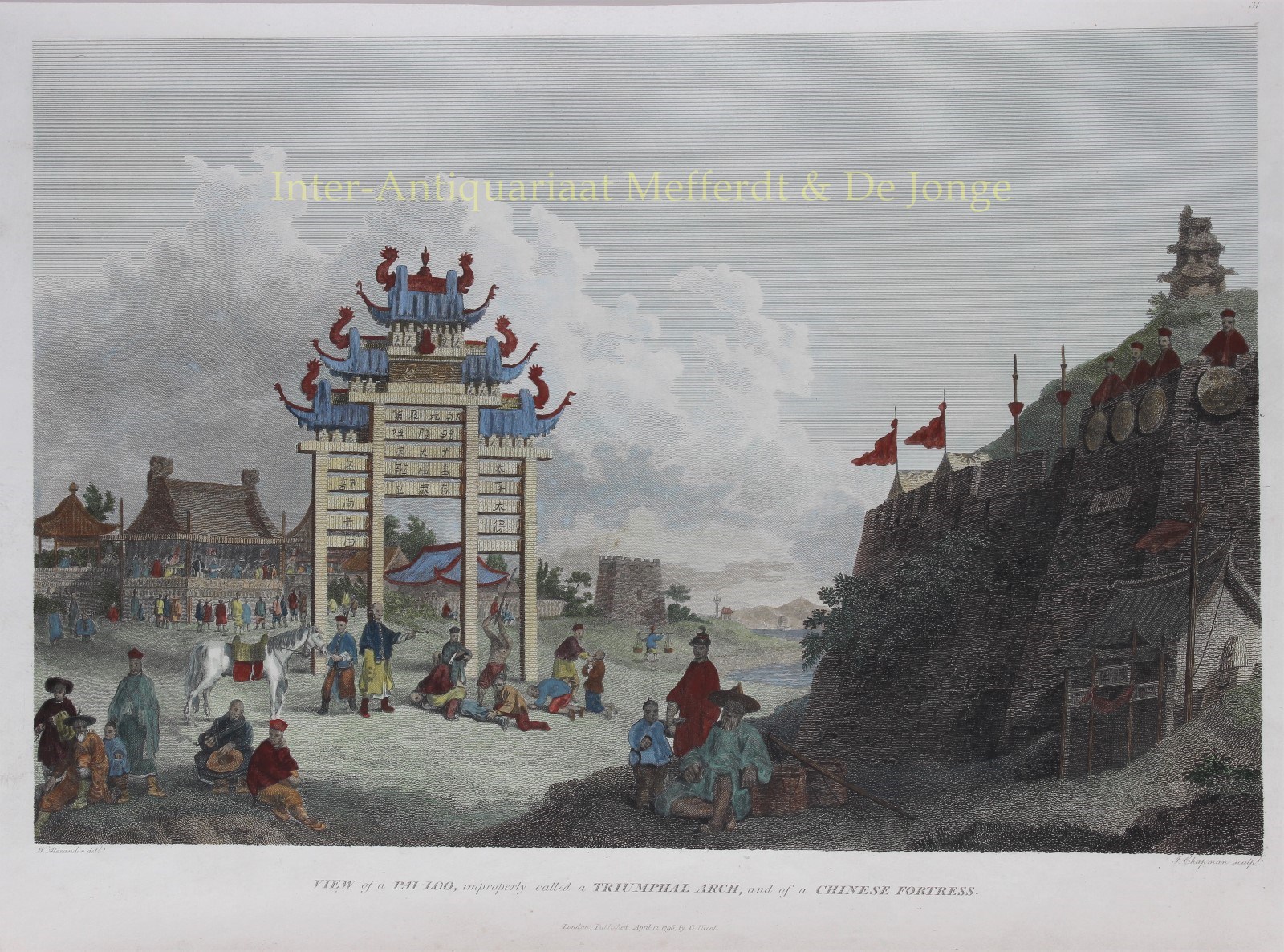China, pai-loo triumphal arch – after William Alexander, 1796
“View of a Pai-Loo, improperly called a Triumphal Arch, and of a Chinese Fortress.” Copper engraving by J. Chapman after…
Lees verder
“View of a Pai-Loo, improperly called a Triumphal Arch, and of a Chinese Fortress.”
Copper engraving by J. Chapman after a drawing by William Alexander (1767-1816 ) from the “Authentic account of an embassy from the King of Great Britain to the Emperor of China; including cursory observations made, and information obtained, in travelling through that ancient empire” written by Sir George Leonard Staunton and published April 12, 1796 in London by G. Nicol. Coloured by a later hand. Size (image): 30 x 45 cm.
The embassy was headed by Earl George Macartney (1737-1806), who was dispatched to Beijing in 1792. He was accompanied by Staunton a medical doctor as his secretary, and a retinue of suitably impressive size, including Staunton’s 11-year-old son who was nominally the ambassador’s page. On the embassy’s arrival in China it emerged that the 11-year-old was the only European member of the embassy able to speak Mandarin, and thus the only one able to converse with the Emperor.
Lord Macartney’s embassy was unsuccessful, the Chinese resisting British overtures to establish diplomatic relations in view of opening the vast Chinese realms to free trade, but it opened the way for future British missions, which would eventually lead to the first Opium War and the cession of Hong Kong to Britain in 1842. It also resulted in this invaluable account, prepared at government expense, largely from Lord Macartney’s notes, by Staunton, of Chinese manners, customs and artifacts at the height of the Qing dynasty.
The engravings are of special interest because of their depiction of subjects that very few Europeans had heard of or seen, showing how advanced Chinese civilisation was on a technical, artistic and organizational level.
Staunton describes this scene as follows: pai-loo a “sort of ornamented buildings are common in every part of China; some of stone, and others of wood. Most of them have been erected at the public expence, for perpetuating the memory of such persons as have rendered public services to their country, but many have been raised for the mere gratification of personal vanity. On some erections of a similar kind, the characters denote them to be of no further use than to point out, like our guide-posts, the distances of places from the spot on which they stand. The building on the right hand corner of the plate is a tower or fortress, and that on the left, a place for theatrical representations which are always entirely open in front. In the centre, near the foot of the triumphal arch, the punishment of the bastinado, or bamboo, is inflicting on a person for misbehaviour, by order of a civil magistrate.”
Price: SOLD

